Are We Any of Us Truly Self-Taught?
The more I hear it said or read of it, the more I question the reality of it. There’s something about even considering ourselves to be somehow self-made or self-taught that says one of two things: is it at all possible to be self-made or self-taught or do things come to us that teach us naturally and some learn from what they have seen and others simply don’t because it is less significant to them than the other? The second is that we see ourselves more highly by even saying such things or positioning ourselves more highly above those around us. By this, I mean mostly that we were actually freely given something that facilitated the lift-off we needed to achieve and then added experience to it to make it more personally ours. Nonetheless, we were all given a start somehow and always by another. Not too much of anything actually had its genesis with us. I think the term is more bandied about now than ever, but when you dig down even just a little you’ll find an article or a book reference that someone read that sparked an interest and prompted the early steps. Even more likely nowadays than ever will be a watched video to trigger events . . . even a bad one . . . that inspired us to move from inactivity and on into action. I dare even say these terms should be ditched in favour of something like ‘I researched it’, or ‘self-motivation drove me to find out more.’ In the world of woodworking people, I venture to suggest that 1 in 100,000 woodworkers learned part or the whole of what they know from watching others, reading about it or following one-on-one instruction. There is nothing wrong with that.
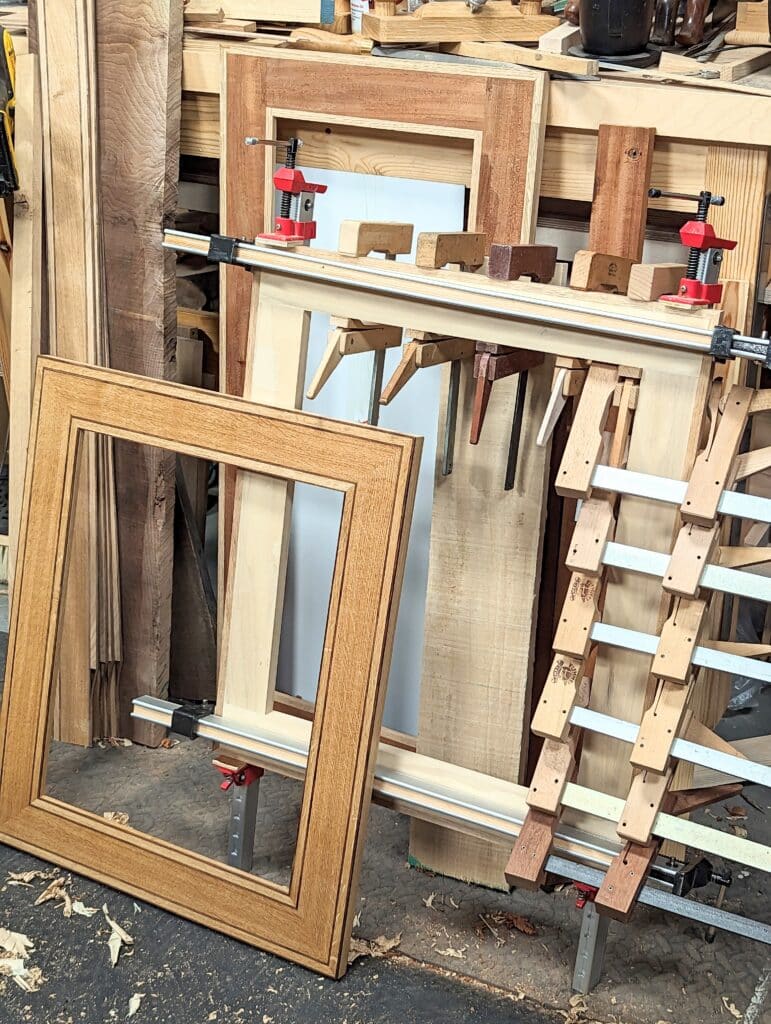
Having said all of this, I’ve mastered all the more from teaching myself through experimentation, trial and testing but that is in the most recent of years to build on pre-existing knowledge passed down and ‘given’ to me through many decades. This passed-on knowledge undergirded most of what I did and do. Changing tooth patterns to saws, adding this bevel to that one and then even chopping with bevel-edged chisels rather than mortise chisels was mostly trial and error based on previous experiences and changed attitudes. None of it was or is too scientific because I don’t have access to specialised equipment, labs, etc, but in most cases, science would only prove what we experienced artisans already know intuitively. I don’t need slow-mo, x-ray equipment to tell me what actually happens at the cutting of my plane travelling along a fixed platen with measured force and fixed speeds. What this equipment cannot give me is the infinite variability I get from my felt humanness in the working where I vary all things in the motion of the tools working the wood. Did you know that what most people call ‘chatter’ is nothing at all to do with the flexing of the unfortunately so-called “thin irons” in bench planes but more to do with friction on the sole, diffidence of the user, the speed or no of the presentation, angle of presentation, dullness of the cutting edge and more? It’s actually true. But if you maker and/or seller of thick irons the first thing you say is that your plane irons eliminate the likelihood of plane chatter that occurs through thin irons even though that is not the cause at all. Every plane I own has the thinner irons from the makers and they never ever chatter. How can this be? Mostly what people get us skidding, a form of skip and jump over the start area of planing– the list that I give above are the causes. Add a slight barrier to the sole of your plane, be it wax or oil, and you’ll get zero “chatter” in the ensuing strokes. To prove me right, next time you do experience the extremely rare phenomenon of true chatter, touch the sole of your plane with the rag-in-a-can oiler and it will disappear in the first stroke. Try it!
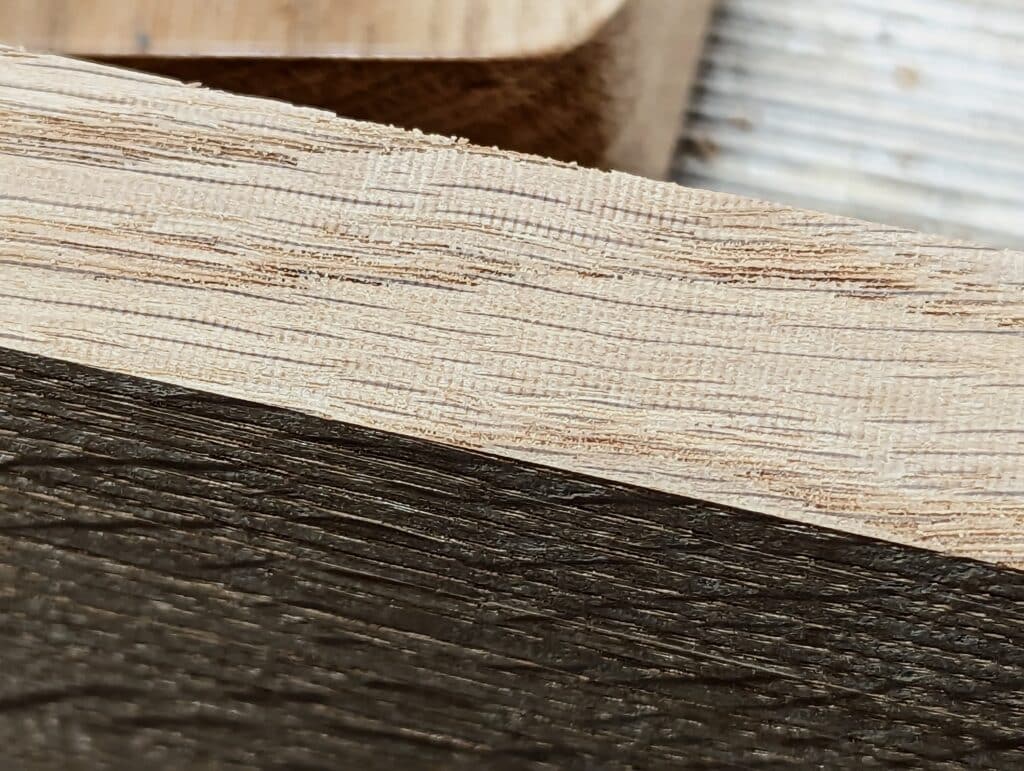

But such ‘scientific‘ experiments are quite interesting even if of little if any value. You cannot get visceral feeling, micro-adjusted, second-by-second sight-adjusting perspective from simply watching a video. It’s in the thrust and retreat of planing, the chop, the paring of chisel work and the handling of tools in the realness on wood where we maximise the feedback of our working. No matter how good the audio, sounds transmitted directly from the wood and the tools in my resident atmosphere give me a hundred times more informational feedback to adjust myself to.

In an age where more information is available at the fingertips than ever in history, how many can say that they are indeed truly self-taught, self-made independent individuals in much of anything at all? I think those that say such things usually do so in the hope of impressing others. Somehow we present ourselves on a higher plain than the ordinary of the world. I look at makers of most things and most things seem to be knock-offs of another’s work–Stanley, all-metal planes and wooden facsimiles from different continents are good examples. They may have small nuances contributed by the makers, a different alloy, larger adjustment wheels and such but looking at them critically and the wheel was already invented two or three centuries before. Remember the first discovery of an unearthed cast bronze smoothing plane of 5,000 years ago in the opening of an Egyptian chamber.
Once we accept that there is very little new under the sun we can rest back and enjoy the whatever of what we learn in bite-sized bits over the days, months and years that preceded our assessment of being somehow self-made and self-taught. We will indeed, if we are honest with ourselves, find that in all that we have and do we were indeed handed something and by gradual accumulation, we made it ours to become more able or experienced than those just starting out. The truth all too often is that we want someone to admire. Our adopting the techniques of others from here and there gave us a more customised outcome in our work. We became highly efficient with our energies and output but mostly it didn’t really originate with us until the style of it became recognisable as our style, type, way, etc. That’s when the ownership rights to the work became our intellectual property. Whatever it is we got we usually got it from something passed on or handed down and we took it up as if it were, well, just lying there for the taking of it. There will of course always be pedestals to place ourselves or others on. Fact! That’s never going to change.
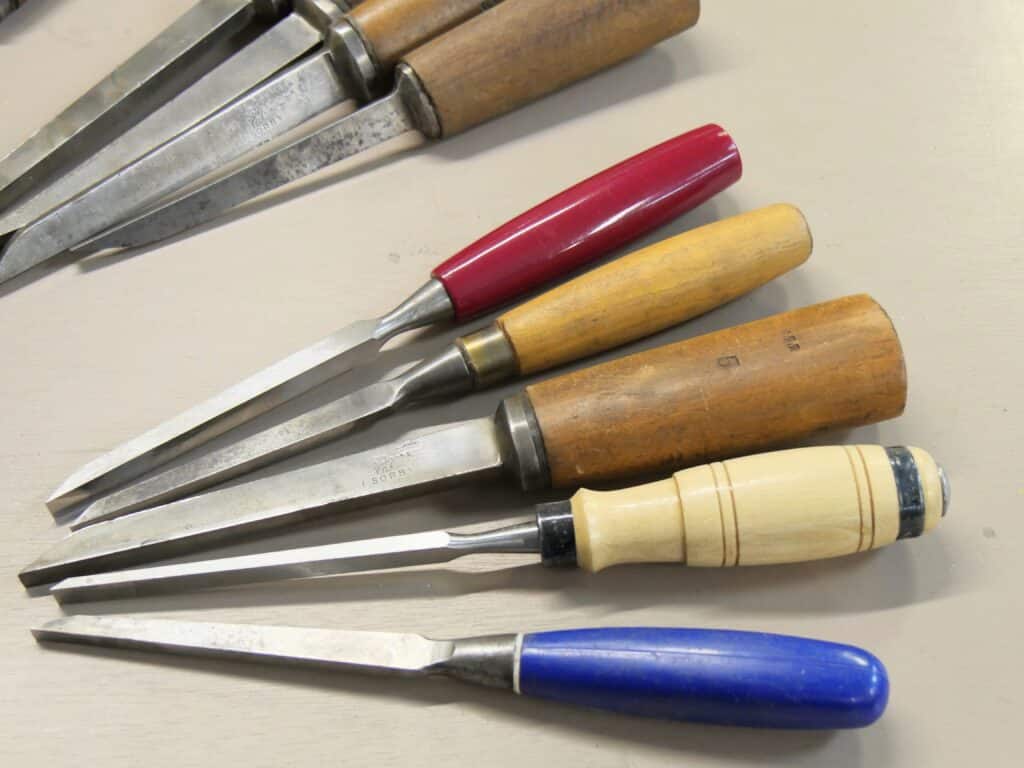
Studying a piece of work a few years ago, I replicated the vintage piece purely for the sake of learning from it. That crafting artisan from ancient times taught me almost as much as the many years of my apprenticeship. I saw nothing but humility in the work done. That man submitted himself to his work and the wood he worked into conformation. I could follow his example and even though I never met the man, somehow I felt like I knew him. I also realised that I could capably apply the same mastery I had gained through the years in the mastery of the planes and saws, the chisels, spokeshaves and knives I used with my real experience. But as I dismantled the joinery, saw chisel cuts, plane marks, identifying symbols and such, alongside saw cuts, I saw things I had never seen before; I was trained all the more by what I saw and received from this one crafting artisan. Not having seen anyone cut or watch the working of it in action enthralled me. It was as if I was sitting at the feet of a two-hundred-year-old master. This basic investigation of that singular man’s work a century or two later fed my creative soul enough to change my life and the way I worked. It happened in my mid-sixties. I am not sure the YT gurus of this age ever admit to such things. Mostly it’s become more about speed and a return for money rather than fulfilling ways to work. In this man’s work, there were no broken fibres, no excess energies or misdirected cuts; the saw cuts stopped to lines marked with a pristinely cut knifewall and the unsanded surfaces left from the plane’s cutting strokes still held good after a century or two’s use. It’s hard to acknowledge such men and women of old who left their mark openly though hidden from view inside for those of us who follow. I doubt the marks of the chopsaw and the tablesaw or powered planer will impress us down the road aways.
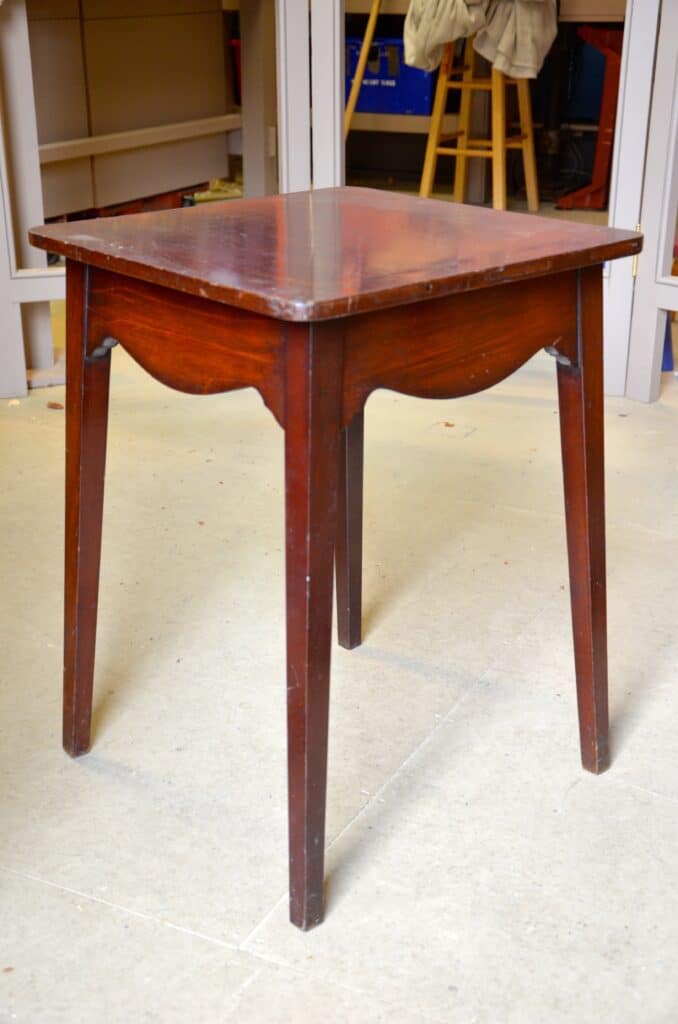
But now, of this self-made man and this self-made woman. What do we have? Are we admiring someone with chainsaws, chaps, headgear and climbing ropes in place because of skill or because of speed? Have they created something from nothing or did they build on something seen, as I believe we all did, to become something from nothing–a self-taught magnet of watchability, perhaps, entertainers if you like? Can any of us truly claim such things as self-taught, self-made? I think mostly not. But perhaps they never made such claims but we in our want and need wanted to put them there on the pedestal. This is especially true now that we Google this and that or watch Youtube and some other resource. Perhaps a better title might be ‘self-motivated copiers’ or something like that. I see nothing wrong with learning from others. It’s the claims of self-made and self-taught that I challenge the more. The copying of others there is nothing wrong with but the unspoken claims of originality is little more than what we might even call plagiarism. I think nearer the truth is our adoption of things whether consciously or unconsciously. We can and do copy without realising it many times, but copy we do.
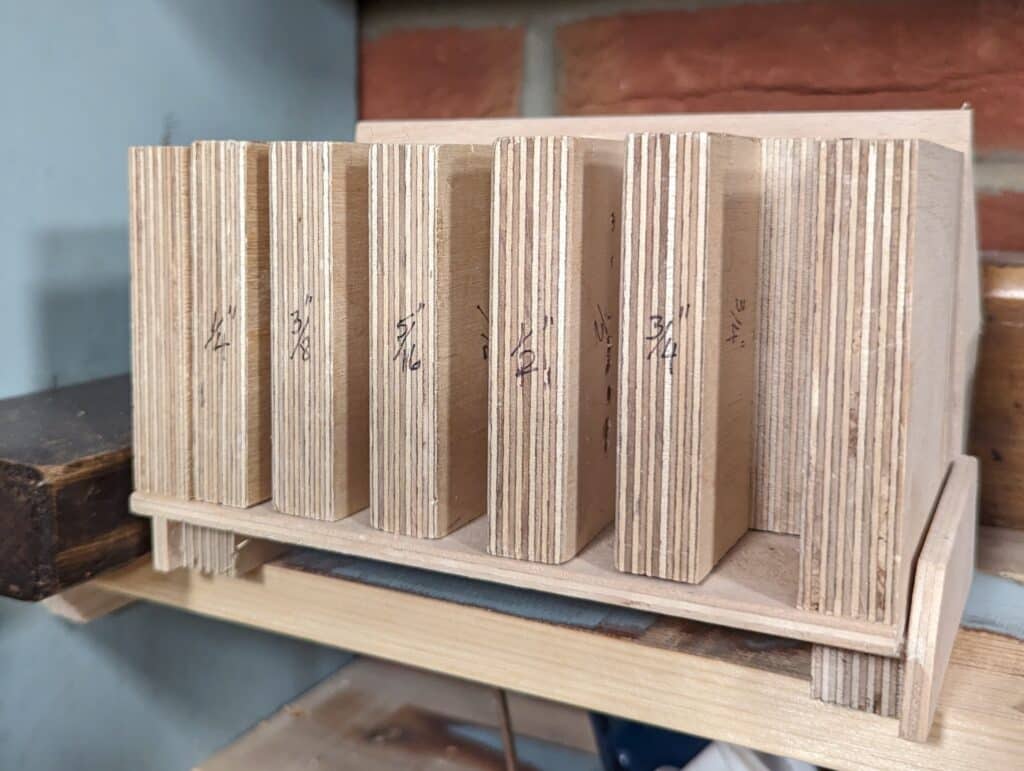
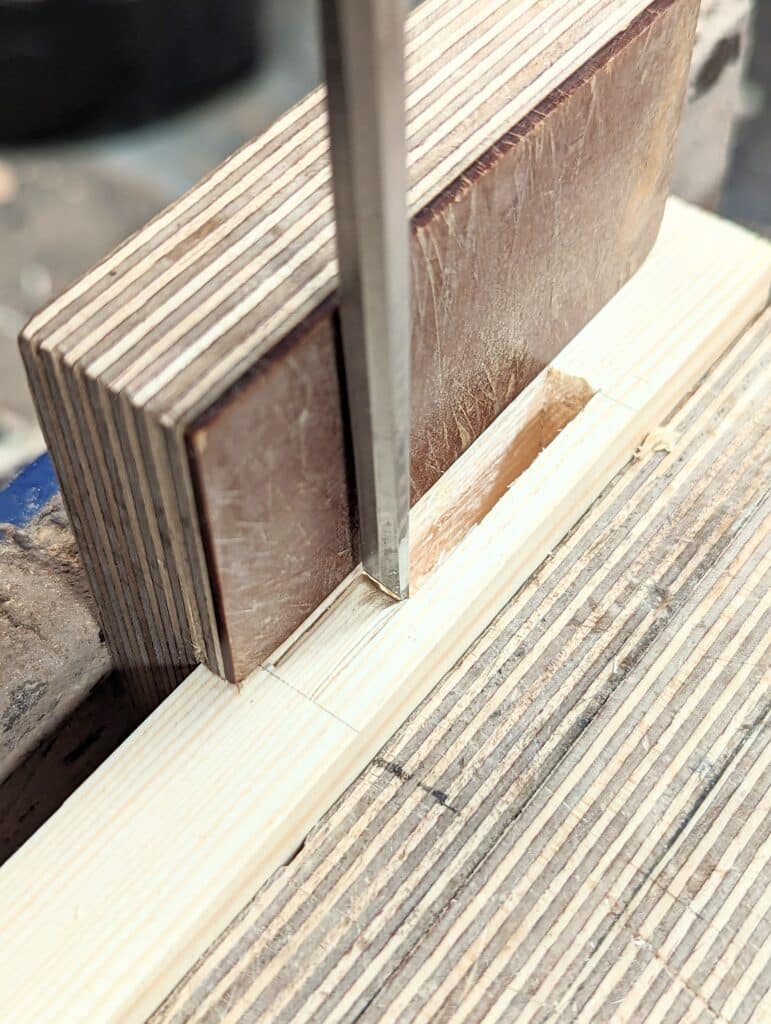
So have I invented some things and further developed others? I believe that I have, yes. They were hitherto unseen before my presenting them to the greater, great-big world. I designed an alternative purfling tool for cutting fine grooves for musical instruments or string inlays that can be homemade in a matter of minutes. We didn’t own one so we made one, it was that simple precept of need being the cause of invention. I invented a special push-me, pull-you knife for truing, trimming and levelling the added inside corners in musical instruments like violins and cellos and such. I invented the mortise guide you see me use in every mortising video. I have also developed other ideas resulting in products, a tool, a technique or an aid of some kind for different elements of making. Whether they were around before me I might never know, but I do know that I had not seen or heard of them before and that is how many things originated for me. I also, such things gestated simply because I had a burden to be a solution. Most of what we have is an adaptation or adoption of what already preexisted. In my 58 years of woodworking, I have invented so very little. Why that is may well be because my forebears handed down most of everything in hand tool woodworking that we use today. The majority of violin makers follow patterns of making and then too the shapes, etc following one of the ancients–Stradivari, Amarti, Guanari and so on. I believe that there are makers making instruments that are every bit as good as those who paved the way 400 years before. Some produce very strange-looking violins that have almost no body to them yet they sound amazing and some say as good as or better than those ancients I speak of. Some things you cannot get away from, it seems, as they still have four stretched strings and tuning pegs. Radical shifts in violin making still occur through one maker’s experimentation.
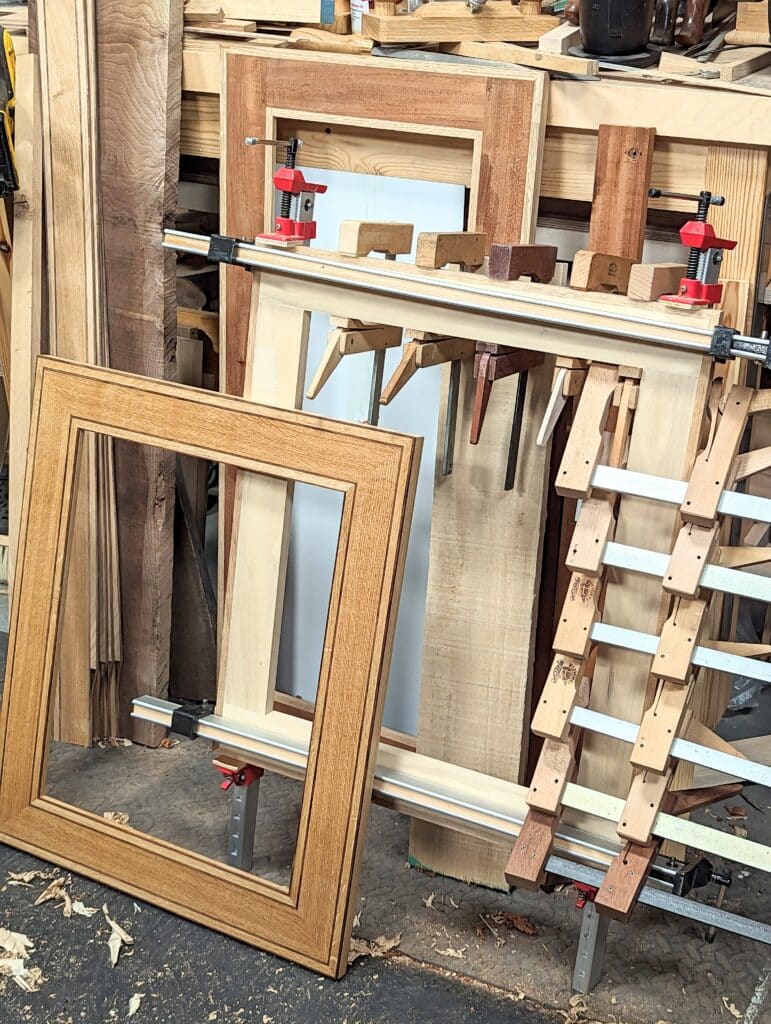
Motivation is everything because it undergirds the dynamic that drives us. My deciding never to work for money again freed me to invest more reality into my day-to-day. Shifting as I did from make to sell to make to design and add in make to fulfil my life required absolute inner honesty and a paradigm shift from how I was trained to think. Money and the amount you make is the most common denominator for assessing the success of another and whether some will even associate with the other too. When others got involved to”help” me in my endeavour it became a big mistake for me. There was a gradual takeover of intent and direction and we were partnered in our association but the intents became obvious over a two-year span. My intention from the beginning was to clearly educate woodworkers worldwide with what I had learned through the decades. Their intention for the main part was to translate my knowledge, skills and abilities into money via ownership of my copyright and intellectual property. Big learning curve for PS. I split and started over from scratch and was never happier despite the added hard work to establish what we have. Pursuing independence at that time may or may not be what you want. There are easier ways to make an income than doing everything the way I have done it. But the thing that undergirded all my work has been the lived life as a working artisan. In our digital world, we can find the information needed in a matter of seconds and some people find it, copy it once and set themselves up as gurus teaching it.
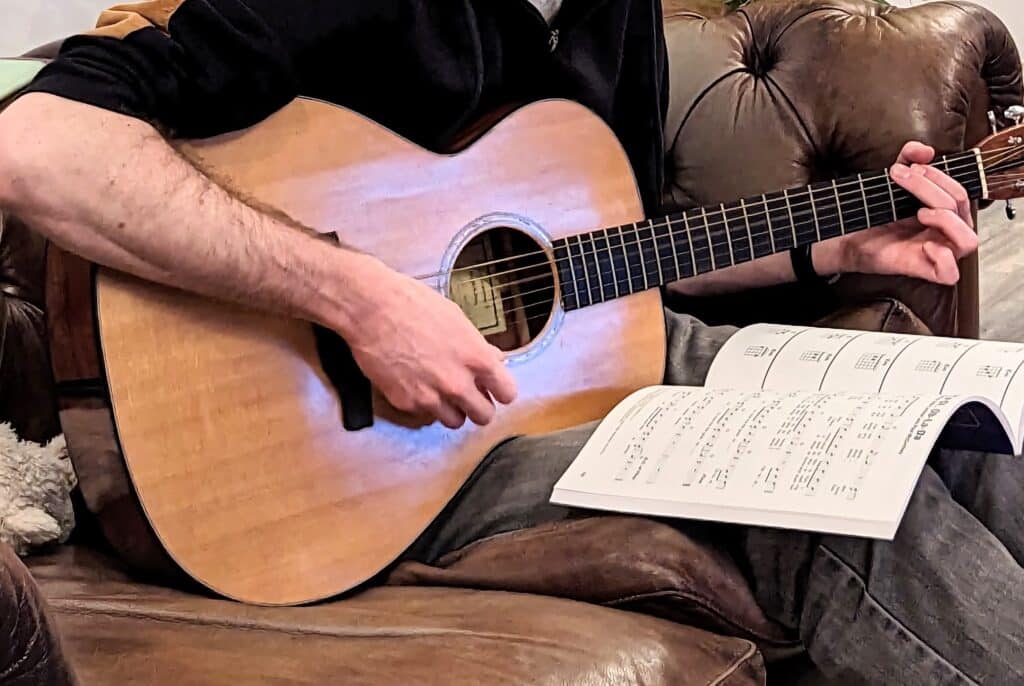
The fact that we often refer to this person or that being gifted is because, well, like it or not, we were given abilities in the first place that we could build on. Singers train their existing, usually good voices further and exercise continuously, but in all cases, they had pretty dynamic voices that could be trained to begin with. Musicians combine a variety of abilities to play, read music, add inflexions into their playing and more when they play a piece. Those that can’t read and were so-called self-taught did discipline themselves to listen and match notes to keys and strings. I am sure that they also composed music. Some people can deconstruct food and determine every ingredient down to the finest quantity simply by eating or should I say tasting the food; they pick out each ingredient one at a time because they have the knowledge of and ability to separate and taste the essence of each part. They’ll tell you which part was roasted, fried, salted and soaked in olive oil or whatever oil and much more. Such people are gifted. They were indeed given abilities. That is not to say they didn’t subsequently work to become much better at their gift and in no way does anything I am saying take away from their achievements
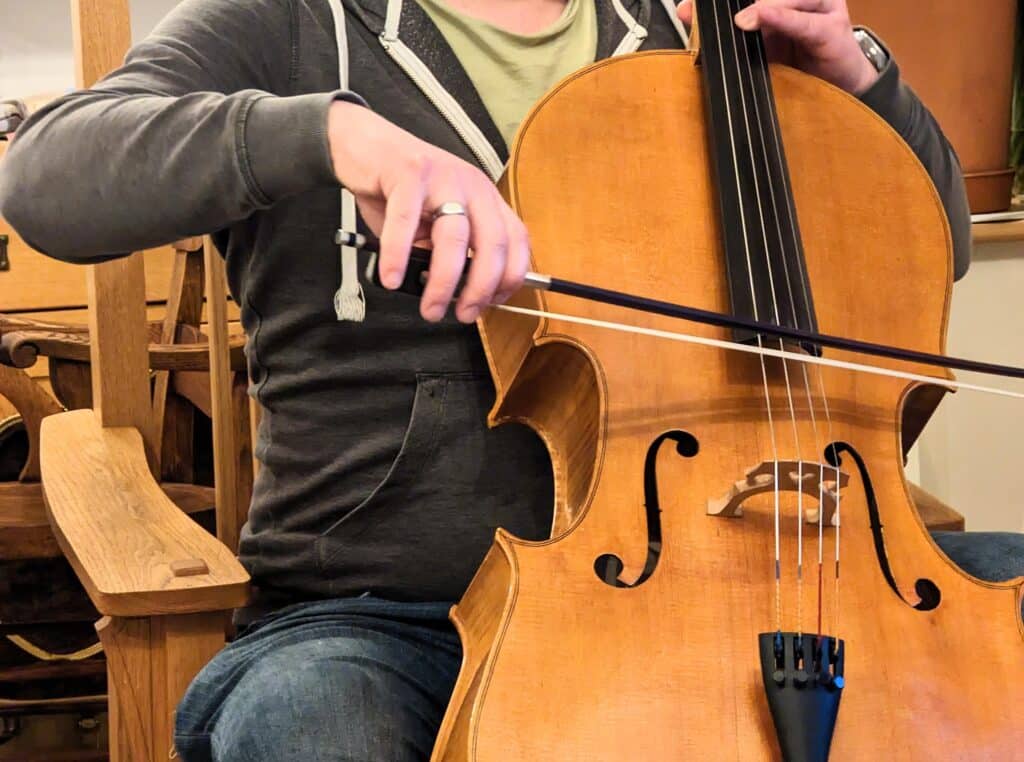


Thanks Paul. Wonderful post.
I had a friend, now since passed, who as an instructor in a different field for four decades. He was very humble (probably why I liked learning from him). Near the end of his life, he described himself as a keeper of the flame. I always liked that analogy.
What a perfect analogy, Joe, and that is exactly how I feel and why I wrote what I wrote. I have come to the conclusion that we are more the assemblers of parts be that assembling knowledge and information or developing the skills we saw and see others use. I learned some leatherwork by attending classes intended solely for my sons who were the recipients of instruction and I merely watched. Through the years I’ve used the tools, information and materials and skills though I merely watched such in use 25 years ago. I have sold my leatherwork in projects and repaired leather goods in need too.. Metalworking, sewing and some other crafts including stained glass work came to me the same way. As you say of the man who passed away, it takes humility to admit you received your knowledge and ability from being taught, no matter how and what. We are merely torch bearers and we pass the light to others before our own light is extinguished. Better that than to let anything end with us. Another thought: some might think that because they didn’t have a physical teacher present that they are indeed self taught but that is not the case as I pointed out in the article where a man for a century and two ago left his legacy in the work he gave to me and I in turned gave credit to him and passed it on to a hundred thousand who read the article.
I learned how to build wooden boats by reading books and really wanted to teach it but I knew what I would be teaching was how to accept mistakes as being a key part of learning. I know that people my age, more than anything else have refined their inhibitions, not their skills. So my task as a teacher would get them to start failing. That is learning.
Humans as a species survived as long as we have because we learn, invent, and make things. When you think about it, people walked and probably paddled from the far ends of South Africa to the far end of South America, where they left the oldest rectangular through-mortises known in archaeology some 13,000 years ago. As a woodworker, you would laugh to discover that the archaeologist that found them called them wooden objects with “needle-eye holes.” They are not remotely as small as needles. But more remarkable to me is that they were made with tools of stone and perhaps bone or ivory.
As a side note, I have a Record No. 10 blade that chatters in any similar rabbet plane body it will fit. It is bowed end to end, and if you set it to remove any more than a whisper of a shaving, it makes the plane buzz like a rattlesnake. Cinching down the lever cap screw can reduce the chatter, make it higher frequency, but won’t stop it. It is the only example of chattering in a plane I have ever encountered.
Do you mean that the blade is bowed along its length so that the middle of the cap iron touches the mid section of the cutting iron when or before it is cinched tight?
Everything I know about carpentry I was taught by other carpenters who were generous with their time and knowledge, like you.
Hi Paul, would you say woodworking is best learnt by doing as opposed to researching. By doing I mean experimentation, trial and error learning from mistakes and adjusting as you go along. By researching I mean reading books, watching videos receiving information before you even think about picking up a saw. From all the techniques you use are these all part of you?. Do you write down the steps of your technique for future reference so you don’t forget? Like a chef with a recipe? Or a standard operating procedure for a organisation?. Or do you not keep notes on how you done a procedure and instead rely on memory?.
Paul clearly lives in a different world than I do. When I tell people I am self taught it is the opposite of arrogance. It is because I have had not a single course in woodworking and I don’t want anyone to think the stupid mistakes I make and poor results I get are because of a teacher’s malfeasance.
It doesn’t really alter what I say about no one really being self-taught but listening and seeing others or reading of it to make their cuts into wood though. You were taught!
Very funny! That’s how I think of myself when people call me a woodworker.
Reminds me of Newton’s saying, “If I have seen further, it is by standing on the shoulders of giants.” For many of us, you are one of those giants, Paul, and a very modest and humble one, too. Thank you for all you have passed on to us, and we always look forward to your continuing observations.
I noticed a lamination on the contact surfaces of your mortise guides. What is it?
Thanks
It’s a piece of melamine plastic cut from a vintage cafeteria food tray, but brass door plate works well too. Wood alone works well enough but for long term use a facing improves longevity.
Hobby Lobby has cheap sheets of very thin copper. 8.5in x 11in. Cut it with a tin snips to any size.
“Very thin copper” most likely would not work. Brass door plate does though.
i think it’s really an argument of defining what self taught is. just reading something in a book i wouldn’t really consider being taught how to do it. it gives the process but you still have to teach yourself how to physically accomplish the task so while the book taught you the theory, you still had to teach yourself to physically accomplish the task. like a child walking for the first time, they’ve seen people walk their whole lives but still have to physically learn to walk
I am a self motivated woodworking apprentice 😉
Yet, it would be nice to have Paul looking over my shoulder.
I am the rare self taught woodworker. I just have to ignore the contributions of the likes of my Father, Taig Frid, James Krenov, Ian Kirby, Peter Child, Paul Sellers, Roy Underhill, Michael Dunbar, Toshio Odate, Bob Flexner, Jeff Jewett, Jim Tolpin, Michael Dresdner, Professor R. Bruce Hoadley, Simon Watts, …… and the list goes on.
I think I despise the contemporary use of the word “entrepreneur” slightly more. “Bespoke” falls in there somewhere close as well.
Dan
What’s funny is I have never seen or read of or followed any one of them beyond reading Bruce Hoadley. So much to look forward to and see what I don’t know when I retire.
You made me laugh there, Paul!
Yeah, I recognize ALL those names as my teachers, though I have not met a one in person. I built my one and only workbench from Ian Kirby’s plans. It was tough building it without a bench to use. Planing with a handplane on the floor on my knees is not something I ever want to try again! More than 20 year later it is still rock solid. It will outlast me! Using Ian’s suggestion, I made a cover from masonite for the bench; sometimes it serves as a desk, sometimes an auto repair bench, and I even clamp my hand cranked grain mill in the vise to grind my own flour.
I liked what you said a lot. I’m a carpenters apprentice now. I lean more towards the framing side of things as opposed to finish but much of what you said holds true. Both guys teaching me are in their sixty’s and easily three times my age. In my simple mind, they’re the standard to reach for, the pinnacle of construction. The respect and love they have for the guys that taught them though is really neat to see. I’m teaching what they’ve taught me to the newest guy now and it’s really neat to be passing on hundreds of years worth of knowledge. My teachers stated that their aim was to teach me to be a better carpenter than they were, and I definitely want to teach the next guy to be better than I. We’re all standing on someone’s shoulders.
“Motivation is everything because it undergirds the dynamic that drives us. My deciding never to work for money again freed me to invest more reality into my day-to-day.”
Money changes everything. I just left a very high-paying job because the job stinks. It sounded good when I was hired, the kind of work I like, a growing startup developing amazing software. But the reality was different. Mismanagement, pressure to deliver under impossible circumstances, and the dealbreaker for me was how they treated certain employees. The usual protecting the bullies and abusive “rock stars” that is endemic in so many tech companies. Nobody is so special they deserve exemption from being decent humans, and “rock stars” are poison. Give me five normal decent people with little tech experience, but who know how to learn, and who treat other people with courtesy and respect, and in one year I will have a great team that easily outperforms the “rock stars”.
Leaving that big paycheck was difficult. But. Now my future has opened up, full of possibilities. Life is short and I don’t want to waste any more of it.
Good for you, Carla. And yes, giving up your day job takes courage. But my experience has shown me that those that thought their gift for tech work only equipped them for tech things readily adapted into other spheres where success wasn’t measured in pounds, dollars and euros. All they needed was that first step to part the waters of fear and doubt.
Additionally, I own one car, do not have a swimming pool, take a couple of weeks off work a year max and still work at least a 50-hour week because, well, it’s not really work. Of course, my children are all grown now but we survived on a single-wage income throughout the last 50 years and sometimes it was nip and tuck. What would we change? Nothing at all.
What would you do with a swimming pool in England? Get hypothermia? (Just being a smart fart, I know what you mean.) In the US you need a car to commute to your job, which means you’re paying a very expensive tax just to get to work, and observing in real-time how the US car culture kills everything. If you’re lucky, your job is meaningful and you don’t resent the time it devours from your life and takes away from your family and dreams.
Even in tech, which is very good at presenting itself with an idealistic humane veneer, which is 99% hogwash, the old cog in the industrial machine mentality persists. It’s like, if a chicken plucker can pluck 20 chickens per hour, speed up the line to 30 chickens per hour. The person doing the work doesn’t get anything for it except stress and physical injury, but by god the boss makes out just fine. Whether you’re writing code, supporting customers, sales, whatever, they always want you to pluck more chickens without getting anything for it, except maybe keeping your job.
Thank you Paul, even though we have never met, you are a wonderful influence and I am grateful I found you.
Apples for apples, US and UK gallons differ by roughly UK gallons delivering 20% more in a UK gallon than a US version. UK cars on the other hand deliver and average MPG of 38.8 whereas the US average MPG is a mere 25.4, a 13 miles difference. If we increase the US gallon to match the UK size US cars would still be a massive 8 MPG less than UK cars. I often wonder why the great difference.
Anyway, Carla, thanks for your encouragement.
Oh! PS Last summer we had many days in the 30 centigrade on up so 86-90. That’s pretty up there.
If you didn’t spend some of your teenage years having your bad cuts thrown in your general direction, along with some less then friendly reminders to do better, you might being missing out the real learning experience.
Hi Paul. I’d be really interested to know what you found in the joints and cut marks in the table you showed here – what was so different in what, in the face of it, seems an unremarkable piece? I’m not doubting its quality at all, just curious to understand what you found.
Thanks. Alan
Self taught? Well none of us live in a vacuum. Jack Nicklaus taught me to play golf – I read his book from cover to cover over and over for at least 6 months before my dad found me a golf club (out of a skip at Wilson’s down the road).
I think I’m a self motivated learner. Paul doesn’t teach me – I learn from Paul. And I do it because I want to, not because I have to or for someone else.
So, I’m self-learning.
Anyway, Spring is here and the garage is warming so it’s time to tidy and clean up this weekend for projects next week and beyond.
“Self-learning”. I like that much better than self-taught. Though, really, all learning is self-learning, isn’t it? If you sit in a classroom and don’t pay attention, you don’t learn. Formal education and formal training are thought of as superior, and in some ways they are. They’re structured, so you don’t have the weird gaps that you get from following your own curiosity and needs. OTOH you learn a lot from a less-structured approach. Paul talks a lot about the value of hands-on experience to test what really works, and for debunking cherished myths like his #1 fave that laying planes on their sides protects the irons. And thick plane irons to eliminate chatter. And that you need a big workshop full of expensive dangerous machines to do fine woodworking. And a $100 chisel makes you a better woodworker than a $10 chisel. And…well, you know the rest. I still remember my 4th grade teacher insisting that horses are always on their feet, and when they lie down they are dangerously ill. A lot of us kids had horses and knew better, but teacher would not listen.
Not listening is fatal no matter what you’re doing. I made the mistake of telling that same teacher my horse stole and ate my ham sandwich, and it was funny and also worrying because I didn’t know if the ham would harm my horse. Instead of taking advantage of a learning opportunity, and launching a “this is how we research stuff” lesson, he insisted that it didn’t happen. Few things destroy trust like not listening. Paul is always gracious, even with people are wrong yet continue to insist.
I also love that he is not shilling for sponsors. Sponsors are poison. The real golden rule is “The one with the gold makes the rules”.
I like the ‘self-learning’ terminology. I think I have learned more by reading books and magazines, asking questions of others, watching videos, etc. than I did from formal schooling. Sometimes I may have believed things that turned out to be untrue, such as the thing about thick plane blades. At one time I thought a scraper plane was something I needed. The only thing available was a Kunz. Woodcraft had some instruction about modifying it to perform better. After all that and some ideas of my own, and then a thick blade, it was only very slightly improved. Talk about chatter! And it leaves DEEP marks! It might scrape well and then without warning the surface is ruined. Now I will see if some oil on the sole helps! I am about to the point of putting it in with my next load of scrap metal.
Overall I have learned a lot from reading and accumulated a pretty good set of tools.
I feel lucky being in this community of hand toolists. Every article is a gift and the action in the comments section is uplifting and inspiring and I learn a lot reading everyone’s point of view.
Nerding over semantics – love it! 🙂 Self-taught? I am self-taught on the piano. I have never had any lessons nor have I ever watched any instructional videos to learn anything. My father helped me taping pieces of score paper to the keys, where I had written out the notes and their name. It was then a case of SFP (Search-Find-Press) in order to translate the musical score into something close to music.
Am I self-taught in woodworking? I will argue that I am in part self-taught. I have never received any instructions, nor have I ever taken any classes. I have read thousands of articles and watched thousands of movies. In my opinion, watching a movie does not qualify as instruction – it is a one direction street. If I am being instructed, I get feedback on what I do. What you do, Paul, is _demonstrating_. Not _instructing_. You _demonstrate_ how to do things, and I can copy you or use that information to form my own opinion and method. The way I do things is based on information and knowledge gathered from a number of people, combined with my own experiences. That last statement is the key in my argument: I obtain experience which is based on my research. Thus partially self-taught, in that I have learned from watching/reading others.
But as I stated: This is, in my opinion, a question of defining a word. Semantics. And I have my clear opinion on the matter, which matters only to me and does not consern anybody else. If you agree with me fine, if you dont – also fine.
I will, however, argue hard and firmly that I _am_ self-taught on the piano! I’ll be more lenient about my woodworking. 🙂
Vidar, I won’t ask questions because dialogue takes it along a course I don’t have time for. If nowhere did you hear to identify the keys by name then you suggest that you just named them identically to the existing named notes. That would be quite miraculous. Hearing notes and identifying them to write them down is no different than using any of the other senses. Mimicking something heard is merely copying but in this case finding the key that corresponds to what you heard. If that is what you are saying then you were taught.
I won’t take this any further either, Paul (not unless it is face to face over a mug of tea and a stable of shortbreads) – but you certainly give me things to contemplate! 🙂
Of course I had help to put the correct notes (and their CDEFGAB names) at their correct positions on the keys, so that part was certainly taught. I was also taught how to read a score. But there is another aspect to music that cannot be taught. “Hearing” beautiful harmonies, using the different chords and to build up an improvisation over a theme. Creating new songs, something I do from time to time. That cannot be taught; that is a gift, and you either have it or you don’t. In my opinion.
Certainly an interesting topic, but I suspect this is a rather philosophical one. And we may never come to an agreement – however the debate would be a very interesting one! Oh well. I’ll ponder over this in solitude, most likely at the workbench. 🙂 It is amazing how much thought work you get done while doing woodworking!
Going off on a tangent here: hand tools gives me the luxury of time to think. I do not need to be 100% “on” while using a hand plane; the automatic processes in my brain takes over and my mind gets to go where it wants. If I ever do that using power tools, I’d be making many parts many times over. I am being reminded of a scene from the movie Schindler’s list, where a man is stating that for the first time in ages he got to form a though. He could not remember the last time he had the time to do that.
That is powerful! If we never have time to think, life is going to be awfully short.
Thank you for the response, Paul. And for “food for more thoughts”. 🙂
I am thankful for your willingness to reconsider. It took many weeks of contemplation to think of what I wrote before the writing of it because I too had to make a paradigm shift of some things I believed. In the end, everything I considered my own doing seemed always to connect to an investigation and then the discovery of things I thought originated with me were in fact passed on in some way. I did in the end conclude that all things are indeed passed on in large and small bites along with mere nibbles. Then of course, as you hint at there, there are the nerve endings in the solar plexus we really have no knowledge of where we sense but cannot claim to be inner yet anonymous informants.
I had 5 year apprenticeship in carpentry and joinery. The ‘and’ was an important part. I learned the basics only at work, at college and from family advice. I just tried to make as few mistakes as possible in my early days when working – or pay was docked. I made my own windows, doors, kitchen, beds, etc etc. The more I did myself the more I learned. Occasionally, on site or in the joinery workshop I saw others carrying out their tasks and asked why they did it that way; I shared my knowledge too. Eventually, I think I can obtain pay for my outgoings in a fairly skilful way. I learn still, every day from my errors or watching others on YouTube. Take care.
My first full time employer told me at 14, “you must be a thief with your eyes, that is how you will learn..”
When I started woodworking, it was because I wanted to make things I could use and couldn’t afford. My only tools wer hammer, saw, and nail. If it wasn’t for looking in books and woodworking magazines, I would never have learned the simplicity of a mortise and tenon or a dove tail. I had no instructor standing over me or advising me. The pieces I make come from my learning to put into practice what I had read about. So, I was taught that way and used that knowledge to develop what skill I might possess through repetition and study. There was no internet. Now, even though I have a pretty good handle on what I’m doing, I like to brows google on different methods and tools and always pick something up. That’s how I found your Masterclass.
When I was younger and seeking someone to teach me shoe making, I kept finding rejection – “This is a dying craft, better it should, you can’t make a living, go away” was the common response. So I had to start by myself, which only took me so far. Then I found a job at a shoe repair shop, and under the tutelage of the owner, learned to tear down and rebuild shoes, how to use all the equipment and hand tools, etc. It took another five years before finding the perfect teacher, and I finally began learning to make orthopedic footwear. Now, fifty years later, and retired, I am trying to learn woodworking. Much I am getting through YouTube videos, such as yours Paul, and an awful lot by making mistakes, just as I did when I began to learn shoemaking.
I echo the comments above, that I started as a self-learner. I believe it is that skill that kept me motivated, and allowed me to be unafraid to make mistakes. But always glad to have teachers such as you, to help me see the difference between where I currently am, and where I might strive to arrive. Thanks.
From your ingenious name, I take it the Leatherstocking Tales had some influence on you.
Ah yes, the chatter with thin blades phenomenon. Just this last week I was teaching a beginners class on handplanes and sure enough that came up. One of the students had an old Stanley #4 with the original thin blade. After sharpening it, and cleaning up the rest of the plane, including doing some flattening on a very badly abused sole, the chatter problem came up from one of the other students with a Lie Nielsen #4 with the much thicker blade.
When we got the old Stanley sharpened and cleaned up we took a few passes on some Cherry. The Stanley produced a smoother finish than the other students LN. That led to some instruction on how to properly sharpen a blade and a lively discussion on some other misconceptions about hand tools such as “this tool will help you create easier” rather than “this tool will make you a better woodworker”. Fun times.
I sometimes call myself self taught about certain things, but I mean it more as I did not have formal education on the subject. That would include computer programming. Not just setting up an Excel spreadsheet and calling that programming, but writing dozens of original programs in Basic, Fortran, and Pascal. I think we as a species are at the point where there may be nothing left to discover that will not have somehow sprung from previous discoveries or previous knowledge of some kind.
I suspect no one has ever been completely self taught. I don’t know who invented a lot of crafts, but early on there were some highly skilled craftsmen. Think of all the work that went into the Tabernacle. Did these early craftsmen develop all their skill from trial and error, or did God give them some skills as gifts?
We all are influenced by others including parents, siblings, relatives, neighbors, schools, churches, jobs, books, videos, and so forth. Most I have learned something good from. A few have taught me what NOT to do, because their lives were disasters.
I learned a lot from early issues of the Old House Journal. I remember the editor rather snobbishly admonishing us that there is no such thing as a banister; it is a baluster. Where I come from everybody knew what a banister was!!! I try to ignore things like that and not let it keep me from learning all the good things he had to teach.
Everything I know was somehow influenced by someone else, even though I my have come up with a design that is unique to me.
I think “ self taught “ may be a metaphor “. Or an idiom.
I suspect many people confuse practice with being self-taught. I learned how to cut hand dovetails in an hour watching Paul. But it took many more hours of practice to master what I was taught. I was taught, and then I practiced by myself.
The premise for what I wrote was to disabuse the ever-increasing majority who describe themselves quite readily to others as self-taught. It simply is not true almost in any way at all. No one beyond the now anonymous inventor has taken a piece of plate steel and invented the sophisticated turned edge to a scraper for woodworking specifically. So much more. We should simply accept that we are rarely ever untaught.
If my woodworking is to be built on the shoulders of giants, the first thing I need is a shoulder plane to get all the way up there 🙂
Everything I know I was either taught or learned by osmosis, and happy little and big mistakes…
Even those things I may have come up with on my own were probably inspired by seeing something somewhere that stayed lurking in the far recesses of my mind.
I always enjoy these philosophical discussions and am grateful for the stimulation that they bring.
I understand your main point and acknowledge the debt of gratitude to you, my grandfather and other great teachers, but I think that in a sense we are all self-taught – we can be told things, shown things, read things etc. but the knowledge is only really gained when absorbed by action, contemplation or experience.
And what about those flashes of inspiration that sometimes occur when out walking, when staring into the fire or just daydreaming?
Wonderful post overall, this is particularly important with so much information being given through platforms like YouTube and personal sites and so few showing where it came from. There was a time when who learned from was as lauded as what you learned. I’d much rather learn from someone who apprenticed for twenty years under someone who themselves apprenticed…
I’m caught by one of the first sentences, though, probably my own misunderstanding.
“In the world of woodworking people, I venture to suggest that 1 in 100,000 woodworkers learned part or the whole of what they know from watching others, reading about it or following one-on-one instruction.”
Should this read “I venture to suggest that 1 in 100,000 woodworkers *didn’t* learn”?
Paul I can’t begin to tell you how much I enjoy your instruction on YouTube. You are a well taught master of your craft and I find your teaching techniques easy to follow and understand . I feel as if I were right there in the workshop with you.
Paul,
I truly believe that the secret of your success is a combination of: your love to design/ create, your determination, your natural talent, your teachers and not to forget the support of your wife and family when things were a bit tough at the early stages of your carrier. I learned almost all of what can do now is by following you and still learning by making mistakes 🙂 Thanks!
I truly believe the only truly measurable success for me happened aged 14 when I followed my vocational calling. Most young people actually never find this and base their future on qualifications which in general are the same qualifications the world over. I never qualified in anything of that nature and certainly any exams I did take were of little value. When I emigrated to the USA my qualifications were looked at but what cinched it was there was a shortage of furnituremaker/designers in Texas.
As I work through the restoration/replacement of some sash windows from c1820 I relate entirely to your feeling of being connected to those who went before. I am learning things from a man who has been dead for 200years! And not always about flawless best practice. As I peel back the centuries of paint I often discover that the old timers understood the value of a good bodge!
I know it makes us feel good to see some flawed work from past eras but it’s not always apples for apples. A man once told me his work on dovetails was far superior to those of old craftsmen because his saw cuts always stopped dead on and the joints were perfect. I asked him how long to cut a four-dovetail joint. He said half a day or so. I said how about making six drawers for a chest in a twelve-hour day with four dovetailed corners per drawer and knowing if he couldn’t hack it there were ten more joiners standing at the gate ready to take his place.